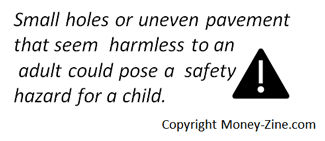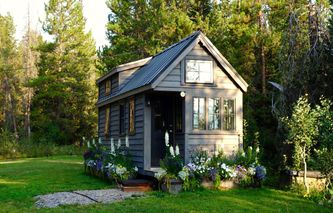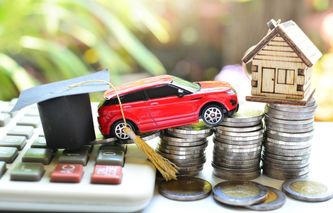Buying a new home is always an exciting event. But for anyone with young children, there can be obvious, or even hidden, safety hazards in any new home. Buying a home is a big investment, and the safety of family members is important too. It's fairly easy to spot safety hazards in a condominium, or apartment. But a single family home may be bigger and more "complex." In this article, we're going to talk about how to inspect a new home for potential safety hazards.
Safe Homes
Additional Resources |
Let's face it; safety is pretty much a 24 hour, 7 days a week job; especially if there are children in unfamiliar surroundings. The information in this article is not intended to be a comprehensive checklist of all the safety precautions to take when children are in the home. There are many great websites, including those published by government agencies, which provide those kinds of checklists. For example, we're not going to discuss things such as cribbing, storing knives, small objects, furniture, and hazardous chemicals. Any responsible adult with children will know what to look out for, and what to do, when it comes to those types of hazards.
Uncovering Hazards
We're going to talk about some of the features of a new home that might present a safety problem for small children. These would be things to look out for in new surroundings. In this way, it's possible to conduct a visual "inspection" of the home and property to determine if corrective action is required.
Home Safety Inspections
This article is going to cover three areas: the exterior and interior of a home, as well as the home's infrastructure. This includes electric, gas, water, and heating systems. Keep in mind this list is meant merely as a guide. When walking around and conducting an inspection, if something looks unsafe, then take immediate corrective action.
External Property and Backyards
The outside of any new home is the logical place to start the inspection. Throughout this entire exercise, the inspector should be thinking like a child. Children are smaller than adults, and those small holes that might seem harmless to an adult could be a safety hazard for a child. When inspecting the outside of the home, be sure to look for the following:

Sidewalks and walkways should be free from cracks, rises or holes that can present tripping hazards.
Outdoor playground equipment such as swing sets should be securely anchored to the ground. Fasteners should be inspected for excessive rust, loose, or missing bolts.
Outdoor play equipment should also be free from splintering wood or sharp metal edges.
The area under play equipment should have sufficient cushioning materials such as wood or rubber chips. Manufacturers of playground equipment will usually specify the depth and range of materials needed around a play set.
If the home has an above-ground or built-in swimming pool, make sure babies and toddlers cannot gain unattended access to the water. Fencing, gates, latches, and ladders are all important components of swimming pool safety. The local municipal office should be able to explain exactly what safety equipment is required for swimming pools.
Finally, make note of dogs and other pets that might wander into the backyard. All dogs can bite, despite what a pet owner might say.
Safety Inside the Home
The next stop will be the inside of the home. This means concentrating on the home's living environment. These are the areas where the family is going to spend most of their time.
All walls and other painted surfaces should be free from cracking and peeling paint, which can contain lead in older homes.
Glass doors should have decorative objects fastened to them so that small children will know when the door is closed.
Window blinds and cords for curtains should be fastened with clothespins or secured with clips to keep them high and out of reach.
Windows should be locked or window guards should be installed on non-emergency exit windows; especially on the second floor.
Bathroom and kitchen outlets should have grounded circuit breakers, also known as GFCI breakers.
Slats on stair railing should be inspected for loose anchoring and proper spacing.
Emergency telephone numbers (fire, police, and ambulance) should be posted by phones.
Determine the best fire escape routes from the home. Find at least two ways out of each room and practice using them. Make sure there is a fire ladder for each room on the second floor.
Electric, Gas, Heat and Water
This final area has to do with the home's infrastructure: electrical outlets, natural gas or oil, heating systems, and water pipes. These are the supporting systems in the home that are often overlooked, or taken for granted, by homeowners but provide a vital role in the home's comfort.
Make sure space heaters are a sufficient distance (3 + feet) from flammable materials such as curtains and bedding.
Fireplaces, especially those fueled by natural gas, should be clear of flammable materials, secured, and locked, to prevent accidental lighting. Fireplaces should also be cleaned before using.
All unused electrical outlets should have safety plugs.
Smoke and carbon monoxide detectors should be installed per local building safety codes. If detectors are already in place, make sure they are working properly using the manufacturer's testing procedure.
Hot water from the water heater should not be greater than 120 degrees Fahrenheit to prevent burns or scalding.
New homeowners should know the location of, and how to turn off, all utilities such as water, natural gas, and electricity.
During these inspections, look at things with the curiosity of a young one. This can help to identify what kind of trouble they could get into. Finally, there is no checklist that covers all possible safety hazards. There is no substitution for common sense. In fact, just taking the time to look around a home with a focus on safety should help to eliminate most, if not all, of the child safety hazards.
About the Author - Buying Safe Homes for Children




.jpg)